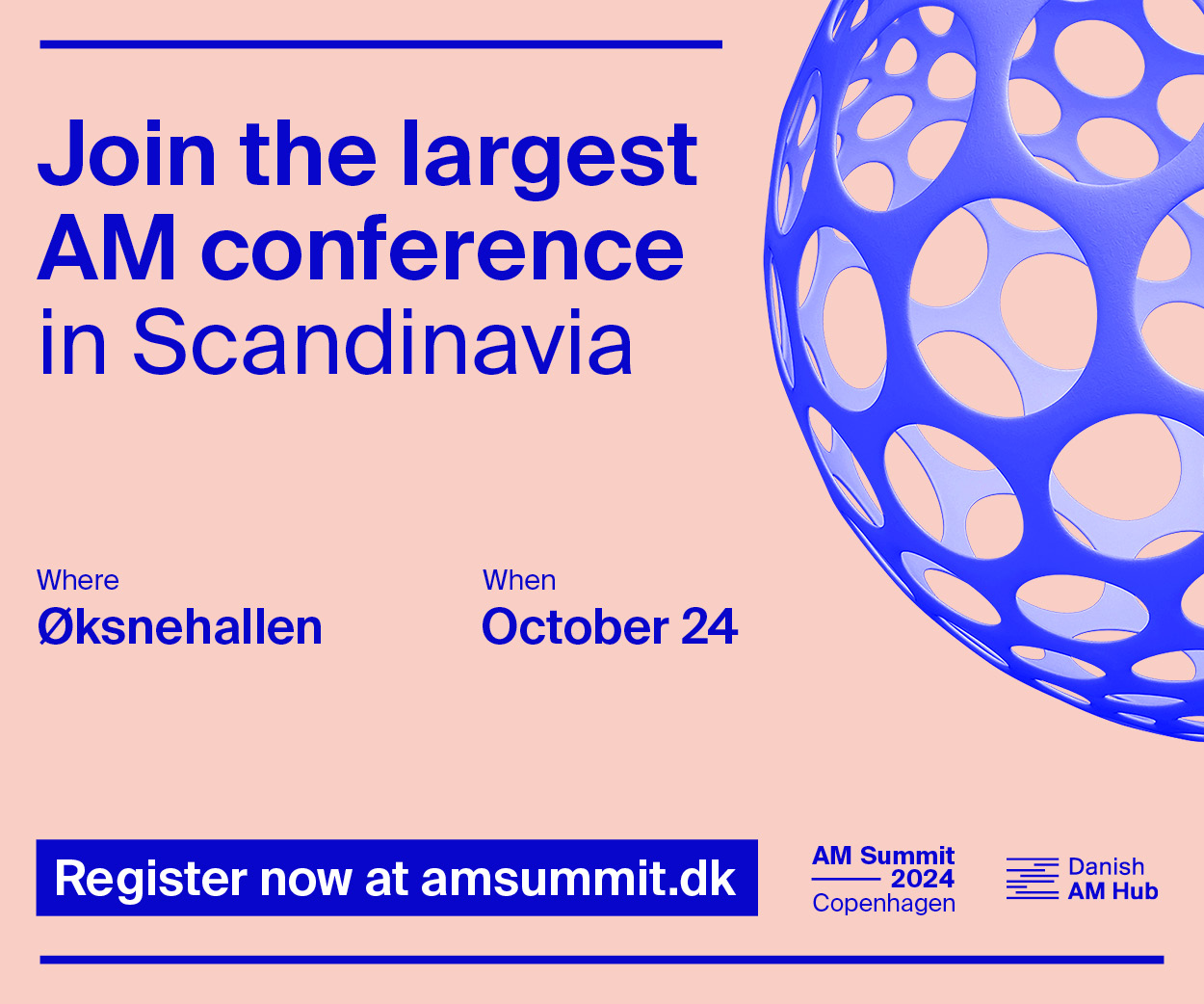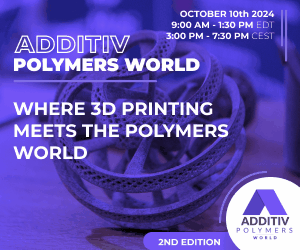 California-based FATHOM, which expanded its on-site managed services and announced important partnerships with Stratasys and Desktop Metal last year, is introducing a fascinating new open source project called Crystallon, which uses Rhino and Grasshopper3D to create lattice structures. FATHOM industrial designer Aaron Porterfield, also an Instructables member, developed the project as an alternative to designing lattices with commercially available software.
California-based FATHOM, which expanded its on-site managed services and announced important partnerships with Stratasys and Desktop Metal last year, is introducing a fascinating new open source project called Crystallon, which uses Rhino and Grasshopper3D to create lattice structures. FATHOM industrial designer Aaron Porterfield, also an Instructables member, developed the project as an alternative to designing lattices with commercially available software.
He joined the company’s design and engineering team three years ago, and is often a featured speaker for its Design for Additive Manufacturing (DfAM) Training Program – and as the project developer, who better to explain the Crystallon project?
Obviously, one of the major advantages of using Crystallon, which FATHOM tells us has already generated more than 400 downloads since it first launched on February 3rd, is being able to generate lattice structures in Rhino without having to export anything to third party software. But, as Porterfield said, other positives include the “modularity and ability to combine other powerful tools available for Grasshopper3D.”
Porterfield started gaining an interest in lattice structures, which have huge internal surface areas, when he was an artist in residence at the Autodesk Pier 9 facility, where he had unlimited access to 3D printers that were able to produce them. He started with experiments that involved how small or complex he could make the objects, and moved on to exploring the available software for lattice structures once he joined FATHOM.
“After exploring almost all of the software available at the time (which were all still very new and mostly in beta), we decided to continue my work with the tools I had started to create. Everything has evolved quite a bit since I have continued to create bespoke tools for our customers and their diverse application needs. It wasn’t until the end of 2017 that the FATHOM team decided to release these tools publicly as open source to leverage the community for further development,” Porterfield said.
“We like to say that with additive technologies, complexity is free, which means the process is most likely not limited or sometimes even affected by the intricacies of the design. Without those traditional limitations we’re used to designing around, almost anything is possible. Lattice structures are interesting because there is almost an infinite amount of application types that would benefit from it.
“The most common and obvious application is structural light-weighting, but they can also be used for energy absorption, insulation, heat transfer, filtration, and medical applications. If you are using an additive technology to produce the part, it is likely there are many situations where a lattice structure could be beneficial.”
The advantage to using lattice structures, according to Porterfield, is having the ability to change a material’s structure, thus manipulating its mechanical properties. That’s why they are used so often in the design of metamaterials, so they can achieve unusual biological, mechanical, and physical properties. But, they are not the perfect solution for every process at every scale, and as such are mostly used with additive technologies such as SLS/DMLS or SLA/DLP.
Porterfield believes that education, such as FATHOM’s continuing DfAM course, will help to accelerate not only the initial adoption, but also the maturity, of these types of applications. Progress will continue in terms of software development, and the industries it’s able to reach, by offering broad explanations of concepts like generating lattice structures, and then letting engineers take the next step in coming up with applications that relate to their specific field.
Explaining why FATHOM chose to make Crystallon an open source project, Porterfield said, “The decision to release it as open source was not only to share it with the community, but to further the development through its users. We realize not all users will have the same applications and needs, so we hope to receive feedback and improvements from users with unique case studies. Each tool is left as a cluster which can be opened and modified at will, in the spirit of open source—hope the community will continue to develop and contribute through the use of Grasshopper forums and Github.”
 Regardless of whether lattice structure software is open source or proprietary, Porterfield thinks it’s important to have this software diversity in the manufacturing industry, in order to meet the needs of all users and applications.
Regardless of whether lattice structure software is open source or proprietary, Porterfield thinks it’s important to have this software diversity in the manufacturing industry, in order to meet the needs of all users and applications.
Software centered around processes like generating lattice structures is still immature, and most software developers are focusing on customers in more widely-used applications. That’s why he started developing his lattice structure tools – to help clients with “very niche applications that other software just isn’t well suited to handle.”
“I think the best approach to developing tools like this is to make them as modular as possible and capable of working with other tools that have their own strengths, rather than try to reinvent the wheel every time,” Porterfield stated. “Generating the geometry (which is all these tools do) is fairly simple, but simulating and optimizing for a variety of applications is very difficult, which is why modularity and leveraging other tool’s strengths makes sense.”
In terms of the use of these structures evolving over the next five years, Porterfield believes the applications with the least amount of adoption are the ones to focus on.
“I think there are still a lot of things left to discover, so it is just a matter of time and experimentation. This field is evolving quickly. In a very short amount of time, our entire concept of what these are used for, how they are made, and how the software should be designed to accommodate that could change. Even within a year or so,” Porterfield said. “I would like to see more time devoted to research on other applications, which will in turn further the development and evolution of the software.”
This is just the first version of Crystallon, and plans for the next release “include utilities for import and export between more robust simulation software packages.”
Discuss this and other 3D printing topics at 3DPrintBoard.com or share your thoughts below.
[Images: FATHOM, unless otherwise credited]
Subscribe to Our Email Newsletter
Stay up-to-date on all the latest news from the 3D printing industry and receive information and offers from third party vendors.
You May Also Like
3D Printing Market Reaches $3.45B in Q2 2024, Marking 8.4% Year-Over-Year Growth
The global 3D printing market continued its upward trajectory in the second quarter of 2024, totaling $3.45 billion—a year-over-year increase of 8.4%. Despite a slight sequential decline from $3.47 billion...
New ABB Cobots Are 10 Times More Accurate for 3D Printing and More
ABB has introduced Ultra Accuracy GoFa cobots, which are ten times more accurate than the company’s previous cobots. While older industrial robots have driven innovation in concrete 3D printing, wire...
AM Expands Beyond 3D Printing at IMTS 2024
As discussed in our previous article on the Western hemisphere’s largest manufacturing trade show, the International Manufacturing Technology Show (IMTS), the industrialization of 3D printing was on display. This was...
Ursa Major & US Navy Make $25M Joint Investment in New 3D Printed Rocket Motor Prototype
Ursa Major, the Colorado-based company dedicated to building a North American rocket propulsion supply chain with advanced manufacturing, has become one of the first recipients of funding from the DoD’s...








































